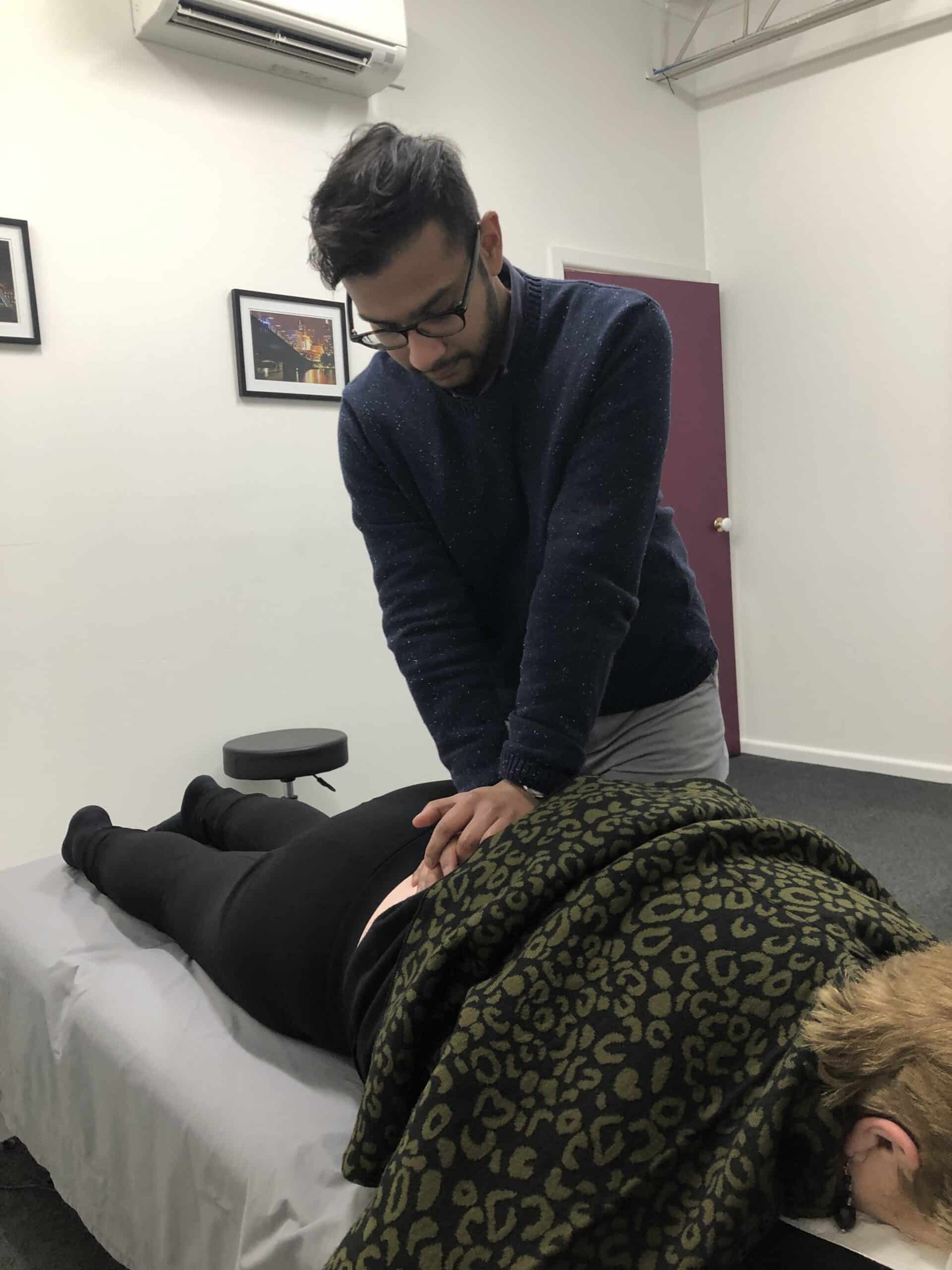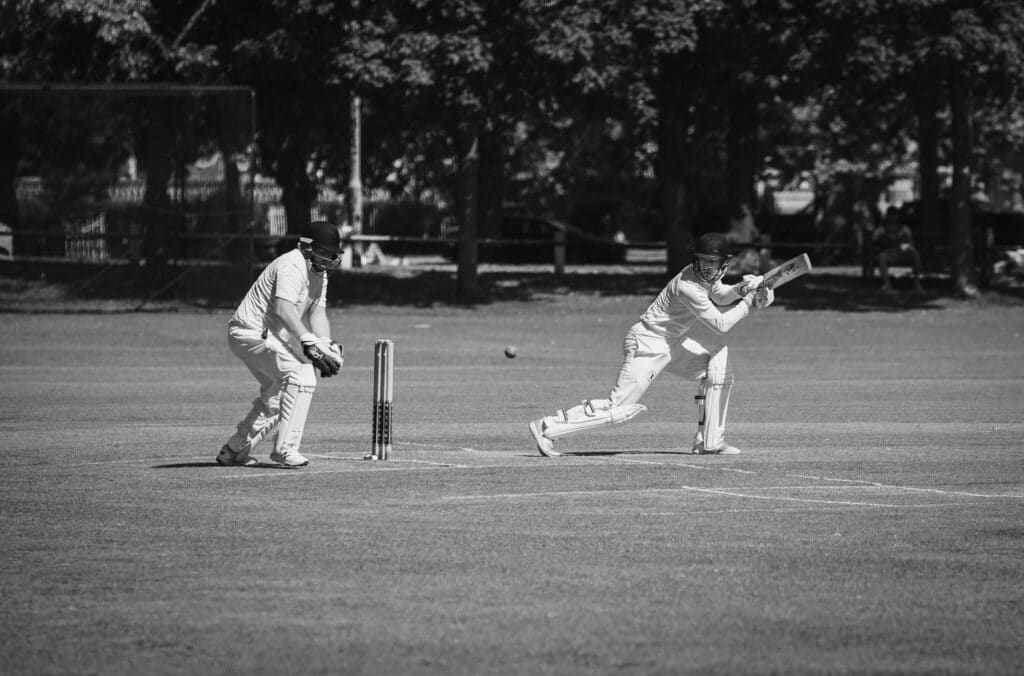Exercises for a stiff middle back
What we’ll cover
Exercises for a stiff middle back
Upper back stiffness is a common condition that regularly presents to physiotherapy. With so many of us sitting for long periods of time at work or school, upper back (thoracic) spine stiffness and pain is a common complaint. Not only does a stiff thoracic back produce pain around the mid back but has been shown to impact shoulder mobility and increase the likelihood of neck pain and headaches.
However, it can be very effectively treated by a physiotherapist. Treatment commonly would include techniques to reduce pain and stiffness. This can include hands-on treatment including massage, joint mobilisations/manipulation or dry needling. Whilst these techniques are great at reducing stiffness and pain in the short term, mobility and stretching exercises are a great way to not only prevent mid back pain but also reduce symptoms at home.
Our physiotherapist Jason Lee goes through two great exercises to improve thoracic rotation (twisting) and thoracic extension. Flexibility and mobility is commonly reduced in both these directions for those with mid back pain.
Top highlights
- Mid-back stiffness is commonly linked to poor posture, sedentary lifestyles, and repetitive motions, often affecting shoulder mobility and causing neck pain or headaches.
- Physiotherapy treatments like massage, joint mobilisation, and dry needling are effective for short-term relief.
- Exercises such as Wall Angels and Thread the Needle improve thoracic rotation and extension, supporting long-term mobility.
- Ignoring stiffness can worsen symptoms, so regular movement, posture awareness, and early intervention are crucial.
Why does it happen?
| Cause | Explanation |
| Poor posture | Slouching over desks or phones compresses the thoracic vertebrae |
| Sedentary lifestyle | Long periods of sitting stiffen the spinal joints and muscles |
| Muscle imbalance | Weak core or upper back muscles force the spine into misalignment |
| Injury or strain | Sports injuries or sudden movement can inflame thoracic joints or muscles |
| Repetitive motions | Tradie tasks, driving, or childcare, lifting overload certain spinal segments |
Reasons you may have a stiff back
According to Spine-health, there are several key reasons why your back may feel stiff, especially after prolonged sitting or first thing in the morning. These causes range from everyday habits to underlying health conditions. Here’s a breakdown:
Tight Muscles in the Hips or Thighs
Muscle tightness in your hamstrings or hip flexors—often caused by prolonged sitting or inactivity—can pull on your pelvis and spine. This tension alters the natural spinal alignment and restricts mobility, especially when bending or transitioning between positions. Addressing this through stretching and mobility work can significantly relieve back stiffness.
Poor Sitting Posture
Slouching or sitting with unsupported posture compresses the spinal discs and fatigues the back muscles. Over time, this leads to muscle imbalances and joint stiffness. Proper ergonomic adjustments (like lumbar support and desk height) combined with posture awareness can help prevent chronic tension.
Inflammatory Spinal Conditions
Conditions such as ankylosing spondylitis or other inflammatory diseases of the spine can cause pain, stiffness, and a gradual loss of flexibility. These conditions often require medical diagnosis and are typically managed with a combination of medication, physiotherapy, and lifestyle changes to reduce inflammation and preserve mobility.
Sedentary Lifestyle
When you’re not moving enough—whether due to desk work, screen time, or travel—spinal joints don’t receive adequate lubrication and circulation. This “joint starvation” results in stiffness, even after just an hour of immobility. Regular movement breaks, gentle stretching, and exercises like walking or yoga are effective preventative strategies.
Symptoms you shouldn’t ignore
A stiff middle back may start as a mild annoyance, but ignoring early signs can lead to chronic pain, reduced mobility, and even compensatory injuries in the neck, shoulders, or lower back.
Here are the key warning signs you should take seriously:
- Tightness between the shoulder blades
- Difficulty rotating the torso or turning the neck
- Sharp pain when breathing deeply
- Hunched shoulders or visible slouch
- Radiating pain into the ribs or upper back
How physiotherapy can help
Wall Angels:
These exercises are great at improving extension.
Standing with your back against a wall.
Try and keep your bottom, lower back, mid back and back of your head against the wall. If required, feel free to step forward and bend your knees whilst in contact with the wall.
Keep the back of your hands and fore arms against the wall.
Keeping your arms in contact with the wall, slide your hands up as far as comfortable whilst maintaining contact with the wall.
This exercise should not be painful.
Try and repeat this exercise 10 – 12 times in a row. 4 – 5 x day.
Thread the needle:
Starting on your hands and knees
Reach one hand up towards the roof. Turn your head to look up towards the roof.
Reach your hand back through the gap between your other shoulder and rest.
Repeat this exercise 10 – 12 times in a row. 4 – 5 x day.
Try these exercises as part of your regular routine. They can also be used to break up the work or school day. A good tip is to set a regular alarm every 2 – 3 hours to remind yourself.
If you continue to experience mid back pain or stiffness, contact our team today.
Book online or call us today.


